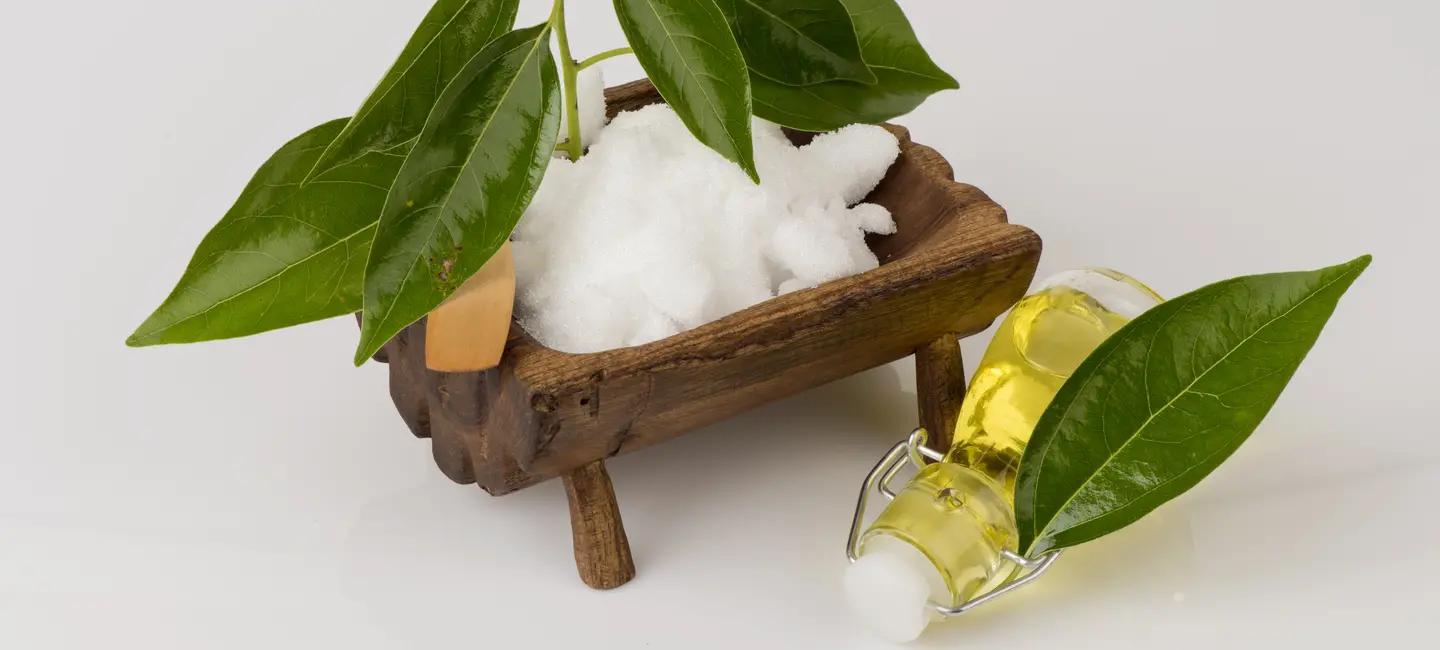
Camphor is a chemical that used to be made by distilling the bark and wood of the camphor tree. Today, camphor is usually made from turpentine oil.
Camphor has a very distinct smell. It seems to stimulate nerves and help with symptoms such as pain and itching. In the nose, camphor seems to create a cold sensation so that breathing feels easier. It's used in products such as Vicks VapoRub.
People use camphor for cough, pain, and itching. It is also used for insect bites, acne, and many other conditions, but there is no good scientific evidence to support most of these uses.
Taking camphor by mouth is unsafe. Camphor products include camphorated oil or camphorated spirits. Camphorated oil was removed from the US market in the 1980s due to accidental poisonings.
Is It Effective?
NatMed Pro rates effectiveness based on scientific evidence according to the following scale: Effective, Likely Effective, Possibly Effective, Possibly Ineffective, Likely Ineffective, Ineffective, and Insufficient Evidence to Rate.
- Cough. Applying camphor to the skin as a chest rub seems to reduce cough. It is FDA-approved for this use in concentrations of less than 11%.
- Acute pain. Applying camphor to the skin seems to reduce pain. It is FDA-approved for this use in concentrations of 3% to 11%.
- Itching. Applying camphor to the skin seems to reduce itching. It is FDA-approved for this use in concentrations of 3% to 11%.
There is interest in using camphor for a number of other purposes, but there isn't enough reliable information to say whether it might be helpful.
Is it Safe?
When taken by mouth: Camphor is unsafe. Consuming camphor can cause severe side effects, including death.
When applied to the skin: Camphor is possibly safe when used in a cream or ointment in concentrations ranging from 0.1% to 11%, short-term. Side effects might include skin redness and irritation. But camphor is likely unsafe when used on broken skin. Camphor is easily absorbed through broken skin and can reach toxic levels. Do not heat camphor-containing products (Vicks VapoRub) in the microwave. This can cause severe burns.
When inhaled: Camphor is possibly safe when the vapor is inhaled from rubs applied to the chest. But camphor is likely unsafe when inhaled in large amounts. Inhaling large amounts of camphor can cause toxic effects.
Special Precautions & Warnings:
Pregnancy and breast-feeding: Taking camphor by mouth is unsafe during pregnancy or breast-feeding. There isn't enough reliable information to know if applying camphor to the skin is safe when pregnant or breast-feeding. Stay on the safe side and avoid use.
Children: Camphor is possibly unsafe in children when applied to the skin. Young children tend to be more sensitive to the side effects. It's recommended that camphor products be avoided in children. Camphor is unsafe when taken by mouth. Seizures and death can occur. Keep camphor-containing products away from children.
Liver disease: Taking camphor by mouth or applying it to the skin has been linked to liver damage. Using camphor might make liver disease worse.
Medications that can harm the liver (Hepatotoxic drugs)
Interaction Rating=Moderate Be cautious with this combination.
Camphor might harm the liver. Some medications can also harm the liver. Taking camphor along with a medication that can harm the liver might increase the risk of liver damage.
Herbs and supplements that might harm the liver: Camphor might harm the liver. Taking it with other supplements that can also harm the liver might increase the risk of liver damage.
There are no known interactions with foods.
Camphor is most often used in ointments and other topical products that contain concentrations of 4.7% to 5.3%. It has typically been applied to the skin by adults 3-4 times daily. It's also commonly used as a chest rub in products such as Vicks VapoRub. Camphor is unsafe when taken by mouth. Speak with a healthcare provider to find out what type of product might be best for a specific condition.
Alcanfor, Camphora, Camphre, Camphre de Laurier, Camphre Gomme, Camphrier, Cemphire, dl-Camphor, dl-Camphre, Formosa Camphor, Gum Camphor, Kampfer, Karpoora, Karpuram, Laurel Camphor, Spirit of Camphor, 2-Bornanone, 2-Camphanone, 1,7,7-Trimethylbicyclo[2.2.1]heptan-2-one.
Information on this website is for informational use only and is not intended to replace professional medical advice, diagnosis, or treatment. While evidence-based, it is not guaranteed to be error-free and is not intended to meet any particular user’s needs or requirements or to cover all possible uses, safety concerns, interactions, outcomes, or adverse effects. Always check with your doctor or other medical professional before making healthcare decisions (including taking any medication) and do not delay or disregard seeking medical advice or treatment based on any information displayed on this website.
© TRC Healthcare 2024. All rights reserved. Use and/or distribution is permitted only pursuant to a valid license or other permission from TRC Healthcare.
